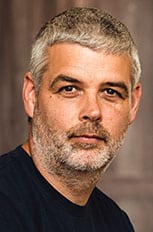
Eoin Roe has a chiropractic clinic in Skibbereen. He is also a certified functional medicine practitioner and provides help with chronic health conditions.
Call 087 9582362
www.roehealth.ie
Vertigo and dizziness are unsettling sensations that can make even the simplest daily tasks feel overwhelming. While a correct diagnosis is essential to understanding the cause of these symptoms, recovery often involves more than just identifying the problem. Vestibular rehabilitation is an exercise-based therapy designed to reduce dizziness and improve balance, it can play a critical role in helping patients regain control and confidence.
Once a vestibular disorder is diagnosed, treatment can begin. In many cases, medication may offer short-term relief, particularly for acute symptoms. However, medication alone does not address the underlying dysfunction within the vestibular system. This is where vestibular rehabilitation becomes essential.
Vestibular rehabilitation therapy (VRT) involves a tailored programme of specific head, eye, and body movements. These exercises are designed to retrain the brain to compensate for the imbalance signals coming from the inner ear. This process is known as central compensation, the brain learns to adapt to the abnormal signals, reducing symptoms over time.
Different conditions will respond to different rehabilitation strategies. For example, patients with BPPV (benign paroxysmal positional vertigo) often respond well to specific repositioning manoeuvres, such as the Epley manoeuvre. The Epley manoeuvre aims to move tiny crystals in the inner ear back to where they belong. In contrast, someone with vestibular neuritis – a condition involving inflammation of the vestibular nerve – may benefit from balance and gaze-stabilisation exercises to help the brain re-learn how to process movement and orientation. This approach can also be helpful for those suffering with Meniere’s disease though it will not reverse this condition it can help patients to manage persistent symptoms as they arise.
A common misconception is that people with dizziness should rest and avoid movement. While rest is important during the early stages of some conditions, prolonged avoidance of activity can actually delay recovery. The brain needs movement and stimulation to rewire and adapt. Supervised, progressive rehabilitation helps patients safely expose themselves to movements that trigger symptoms, allowing desensitisation and gradual improvement.
One of the key components of VRT is gaze stabilisation. This involves exercises that train the eyes to stay focused on a target while the head is moving. This is crucial for patients who experience visual blurring or disorientation with head movements. Balance training is also important and includes exercises on different surfaces, in varying lighting conditions, and with changes in head positions, which are all designed to challenge and improve the brain’s ability to maintain balance.
Rehabilitation is not a one-size-fits-all process. Each patient requires a personalised plan based on their specific diagnosis, symptoms, and goals. Progress may be slow at first, and it’s normal to feel frustrated during the journey. However, with consistent effort and the right support, most people see significant improvements in their symptoms and overall quality of life.
Rehabilitation for vertigo and dizziness is a vital step toward recovery. It not only helps improve balance and reduce symptoms, but also restores independence and confidence.
Eoin Roe is a Chiropractor and Functional Medicine Practitioner based in Skibbereen, please feel free to make contact through the website www.roehealth.ie or call him on 028 62081 and leave a message.


